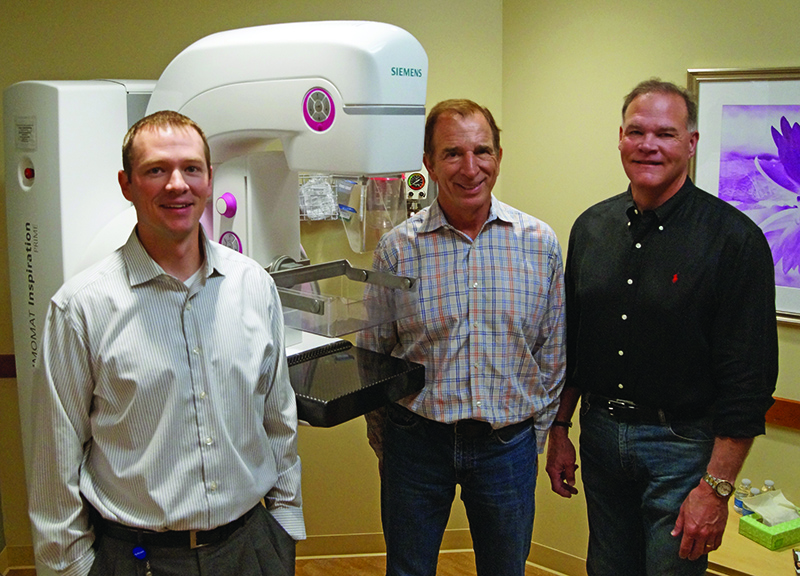
Mammography, along with regular self-exams and exams by a healthcare provider are
important tools in detecting breast cancer or other abnormalities. Soon
local women will have access to another important screening tool—stereotactic
breast biopsy.
Stereotactic breast biopsy is a procedure that uses mammography to precisely
identify and sample (biopsy) an abnormality within the breast. It is often
used when small growths or accumulations of calcium (called calcifications)
are detected on a screening mammogram. These calcifications may not appear
on an ultrasound or be felt during a physical breast exam. Stereotactic
breast biopsies use x-rays to locate and target the area of concern and
guide the biopsy needle to the right location. After the sample is collected
it is sent to a pathology lab to determine if cancer cells are present.
The quicker breast cancer is detected, the faster treatment can begin.
“The closest location for this type of procedure was Sheridan, Casper,
or Rapid City, SD,” says Terri Kinney, Director of
Radiology and Imaging at
Campbell County Memorial Hopsital. “When the new equipment is installed and staff training is completed
this summer, we’ll have the ability to do this relatively simple,
low-risk procedure right here.”
Stereotactic biopsy takes only about an hour, is less invasive than a surgical
biopsy, results in quicker recovery and causes minimal scarring.
 Breast Cancer Screenings for Women with Average Risk
Breast Cancer Screenings for Women with Average Risk
-
Age 40: Talk with your doctor about when to begin screening, Women should have
the opportunity to begin screening if they choose.
-
Age 45: Begin yearly mammograms.
-
Age 55: Transition to mammograms every other year or continue with annual mammography,
depending on your preferences.
-
Age 55+: Continue to have regular mammograms for as long as you're in good health.
Source:
American Cancer Society
Pictured are CCH Radiologists
Paul Rigsby, DO;
Joe Lawrence, DO; and
Alan Mitchell, MD.